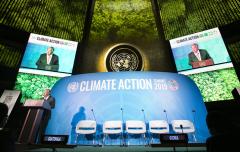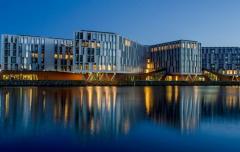Partner Spotlight: Building Efficiency Accelerator
Buildings are responsible for one-third of global energy demand and one-quarter of global GHG emissions. The Building Efficiency Accelerator (BEA) is a public-private collaboration launched under Sustainable Energy for All (SEforALL) in 2014. In 52 cities in 25 countries around the world, the BEA turns global expertise into action to accelerate the local implementation of building efficiency policies and programs.
SEforALL asked the BEA team about its collaborative approach, examples of cities adopting energy efficiency policies and how city-level projects can scale up, among other topics.
How was the BEA involved in the UN Climate Action Summit in September?
The BEA will provide implementation support towards the goals of the Zero Carbon Buildings for All Initiative, a multi-partner effort launched at the summit which unites national and local governments, industry, investors, and civil society in an international coalition to decarbonize all new buildings by 2030 and all existing buildings by 2050. As part of SEforAll’s Global Energy Efficiency Accelerator Platform, the BEA will also help countries implement towards the target of a 3 percent increase in energy efficiency per year set forth at the summit by the Three Percent Club.
What is an example of a city that has successfully changed its policies based on BEA’s advice? Are there examples where success at the subnational level had a positive impact at the national level?
With support from Pacific Northwest National Laboratory (PNNL) and Consejo Colombiano de Construcción Sostenible (CCCS), the Building Efficiency Accelerator supported the city of Bogotá in developing the terms of a performance-based building code to save energy and water. This involved working with the national government to revise legislation to be more realistic and implementable and led to the first implementation of the national building efficiency code. For Bogotá, this will be crucial as the city aims to double in size over the next 30 years while also preserving local air quality.
Many cities can run pilot projects, but what are the common challenges to scale up from, say, five to 500 energy efficient buildings?
The main challenge to scaling up pilot projects stems from financing. If a city is renovating five public buildings, they can often find city funds to cover the costs. However, scaling up to renovate 500 buildings requires financing, to which there are a few challenges. For example, investors are unlikely to lend to city governments with poor credit ratings, or that don’t have long-term building regulations to provide a predictable investment climate. Financing opportunities may also be limited if commercial financiers deem the project size too small (and transaction costs therefore too high).
Another challenge to scaling pilot projects comes from administration and leadership changes, which often result in changes to city priorities and some government staff. In cases where building efficiency is not well-understood or on the new administration’s agenda, stakeholders need to make the case for why the projects or programs in development or underway are worth their attention. Given the long-term planning needed for scaling up programs on energy efficient buildings, this re-engagement can slow down progress.
Does the BEA provide financing, or do you connect the cities with potential funders?
While the BEA does commit a certain amount of funding to our “deep engagement” cities for targeted technical assistance across the platform, our role is to facilitate pre-project preparation rather than provide financing. We aim to connect cities with potential funders as well as assist them in structuring and articulating proposals in a way that is attractive to financial institutions. We also help cities address some of the financing challenges mentioned earlier, for instance by helping them establish stable and long-term regulations that make the market more attractive to capital.
The BEA is part of the Global Energy Efficiency Accelerator Platform, which consists of other sector-based energy efficiency accelerators such as Lighting, Appliances & Equipment and District Energy. How are you collaborating with these partners?
We collaborate with the other energy efficiency accelerators when we see opportunities to combine efforts. For example, Belgrade was a deep engagement city for both the BEA and the District Energy Accelerator in 2016-2017. We held our kick-off workshop jointly with the two accelerators and wrote a case study examining the benefits of connecting efficient buildings with cleaner district energy systems. Working together allowed us to make a case for a holistic and integrated approach to Belgrade’s action plans.
What is the next big step for the BEA?
The BEA is raising city awareness and ambition towards decarbonizing the building sector with zero carbon buildings that are energy efficient and meet their remaining energy needs with clean renewable sources either through on-site generation or off-site procurement. Building decarbonization is critical to limit global temperature rise to 2 or 1.5°C, with zero carbon targets for new buildings by 2030 and all buildings by 2050. Starting in 2020, the BEA goals will incorporate this necessary ambition as we assist member jurisdictions in decarbonizing their building stock. Energy efficiency will remain the critical first step in building decarbonization.
How can cities join the BEA?
Cities, states, and other subnational governments looking to learn more about joining the BEA should check our FAQs or reach out to us directly at buildings@wri.org.
Find out more about the BEA's processes and approach.




